 Creepy
Creepy  Creepy
Creepy  Technology
Technology 10 Scientific Breakthroughs of 2025 That’ll Change Everything
 Our World
Our World 10 Ways Icelandic Culture Makes Other Countries Look Boring
 Misconceptions
Misconceptions 10 Common Misconceptions About the Victorian Era
 Mysteries
Mysteries 10 Strange Unexplained Mysteries of 2025
 Miscellaneous
Miscellaneous 10 of History’s Most Bell-Ringing Finishing Moves
 History
History 10 Great Escapes That Ended Right Back in Captivity
 Weird Stuff
Weird Stuff 10 Fascinating Things You Might Not Know About Spiders
 Food
Food 10 Everyday Foods You Didn’t Know Were Invented by the U.S. Military
 History
History 10 Odd Things Colonial Americans Kept at Home
 Creepy
Creepy 10 More Representations of Death from Myth, Legend, and Folktale
 Technology
Technology 10 Scientific Breakthroughs of 2025 That’ll Change Everything
 Our World
Our World 10 Ways Icelandic Culture Makes Other Countries Look Boring
Who's Behind Listverse?

Jamie Frater
Head Editor
Jamie founded Listverse due to an insatiable desire to share fascinating, obscure, and bizarre facts. He has been a guest speaker on numerous national radio and television stations and is a five time published author.
More About Us Misconceptions
Misconceptions 10 Common Misconceptions About the Victorian Era
 Mysteries
Mysteries 10 Strange Unexplained Mysteries of 2025
 Miscellaneous
Miscellaneous 10 of History’s Most Bell-Ringing Finishing Moves
 History
History 10 Great Escapes That Ended Right Back in Captivity
 Weird Stuff
Weird Stuff 10 Fascinating Things You Might Not Know About Spiders
 Food
Food 10 Everyday Foods You Didn’t Know Were Invented by the U.S. Military
 History
History 10 Odd Things Colonial Americans Kept at Home
10 Bizarre And Fascinating Facts About Life In Old Japan
After more than a century of civil war, Japan was reunited by military warlord Tokugawa Ieyasu in 1603. Tokugawa founded the Tokugawa shogunate, a dynasty that would rule Japan until its overthrow in 1867.
This period of Japanese history is known as the Edo era, named after the country’s capital city (present-day Tokyo). For more than 200 years, the shogunate kept Japan sealed off from the world until the US forced it to reopen in the 1850s.
Despite its isolation, however, Edo Japan enjoyed a long period of stability and wealth as well as a golden age in the arts. Life in Edo Japan was colorful and interesting, and there were plenty of unique aspects that made it unlike any other place then or since.
10 It Was Illegal To Leave And Enter The Country
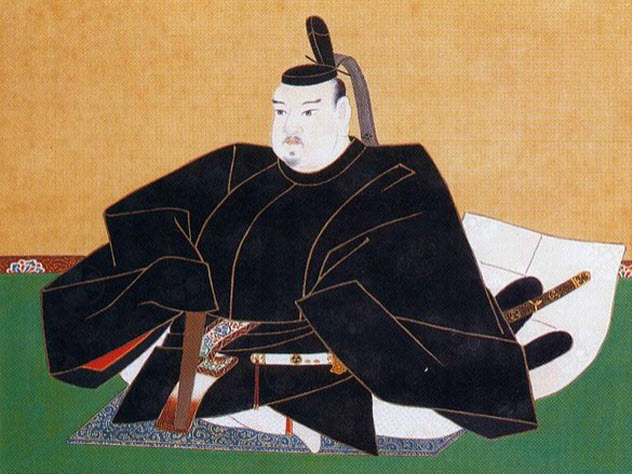
Beginning in 1633, the shogun Tokugawa Iemitsu issued a series of edicts that laid the foundation for an isolationist foreign policy that would last for more than 200 years. In the Closed Country Edict of 1635, Tokugawa made it illegal for any Japanese ship to set sail for a foreign country.
In fact, all Japanese were now forbidden to leave Japan under penalty of death. Secretly planning to leave the country or returning to Japan after going overseas could also warrant execution.
These laws seem ridiculously harsh, but the government wanted to curb the potentially destabilizing influence of Christian missionaries and European traders. In 1639, another edict was issued that forbade the Portuguese from entering the country.
Any Portuguese ship that attempted to land on Japanese soil would be destroyed, and all of its passengers would be beheaded. This was only to be done as a last resort, however, and violent retaliation against Portuguese ships was actually quite rare.
Amazingly, even within the limits of these isolationist laws, foreign trade flourished during the Edo period. Although foreigners were banned from the country, the Chinese, Koreans, and Dutch were still allowed to trade under strict regulations.
The Dutch especially benefited from this trade. They were the only Westerners allowed in Japan until the US forced Japan to open its borders after the expeditions of Commodore Matthew Perry in the 1850s.
9 The Average Man Was Only 155 Centimeters (5’1″) Tall
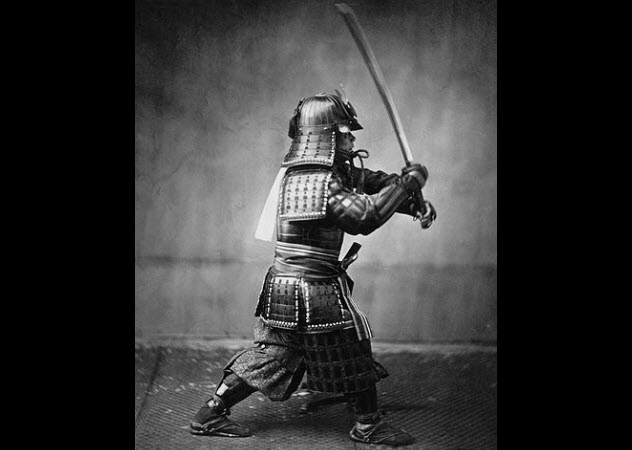
Although the Edo period is renowned as a great time for art, culture, and commerce, it was generally a miserable time for the common people. The social hierarchy of the period was rigorously enforced, with most people staying in the class in which they were born.
Samurai were ranked as the highest class, followed by farmers, artisans, and merchants. Comprising the majority of the population, farmers were the only class that was taxed.
Although conditions improved a bit in later times, farmers generally lived in terrible conditions. Poverty was so bad in some areas that families practiced infanticide. The poor in urban areas weren’t much better off.
According to a study by Tokyo’s National Museum of Nature and Science, the average height for adult Japanese males and females during the Edo period was 155 centimeters (5’1″) and 145 centimeters (4’9″), respectively.
By analyzing the remains of nearly 10,000 inhabitants from that time, researchers found that many people were short and malnourished. Some of the remains showed marks of syphilis.
A lot of the women had lead poisoning from their makeup. Many of the remains belonged to young people, suggesting that the mortality rate was high for that age group.
8 Human Feces Were Regarded As A Valuable Commodity
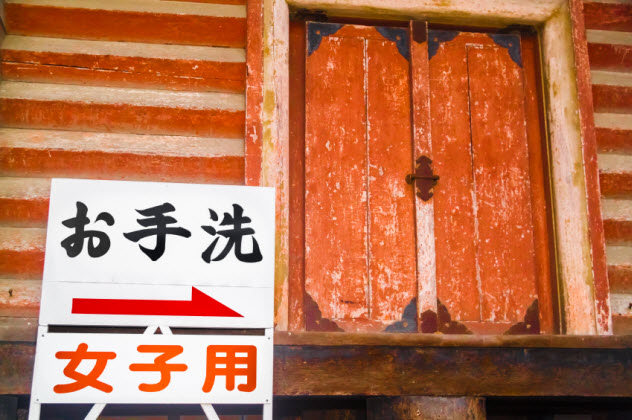
Due to the lack of a major livestock industry, Edo Japan suffered from a lack of animal manure that could be used as fertilizer. To make up for this, farmers used night soil, human feces that they or professional collectors gathered at night.
All across the country, entrepreneurial farmers and landlords set up toilets and outhouses along the roads. Urine was also collected, although it wasn’t as valuable as feces.
Collecting, selling, and buying night soil was serious business. Stealing night soil could land you in prison. Guilds and associations were established to regulate the industry and fix prices. Fighting over collection rights in a given territory was common, especially when people were granted special monopolies.
In one case in 1772, the collectors of Watanabe village were given exclusive rights to collect the urine containers in Osaka. Other collectors were so upset that they tried to challenge Watanabe’s collection rights and even sabotaged their containers.
Remarkably, the night soil industry made Edo Japan one of the cleanest places of its time. Unlike European cities, where the streets were filthy from people disposing of their waste outside their windows, Edo cities were typically clean and free from outbreaks of hygiene-related epidemics.
7 There Was A Thriving Pornography Scene
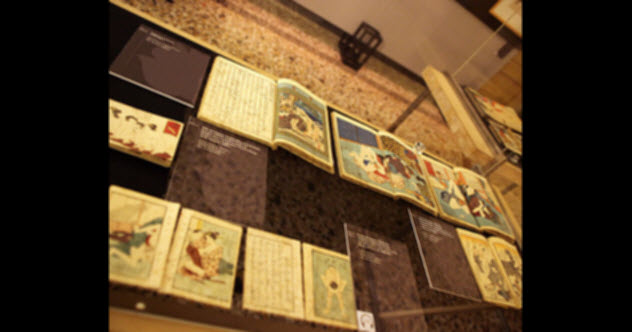
Most people regard porn as a uniquely modern vice, but there was plenty of pornography produced in the ages before the invention of photography. In Edo Japan, erotic wood-block prints called shunga (“springtime pictures“) were especially popular.
Although the government tried its best to censor and discourage shunga, the prints were enjoyed by men and women of all social classes. So the restrictions were rarely enforced.
Shunga prints were often collected as books, and these erotic works typically sold better than more general ones. Although they were produced anonymously, nearly every major artist of the period, including Hokusai and Utamaro, dabbled in the shunga genre. The subjects of these prints were innumerable, including soft-core scenes, orgies, gay sex, trysts with exotic foreigners, and proto-hentai tentacle rape.
In 1859, as Japan’s contact with foreigners increased, an American visitor in Yokohama named Francis Hall was shocked on two separate occasions by Japanese hosts who proudly showed him their collected books of shunga.
In his diary, Hall noted that “these books abound and are shamelessly exhibited.” Shunga’s seedy popularity faded once Japan embarked on its path to modernity and Westernization, but it has since witnessed a resurgence in appreciation and interest.
6 Poetry Contests Were A Popular Form Of Gambling
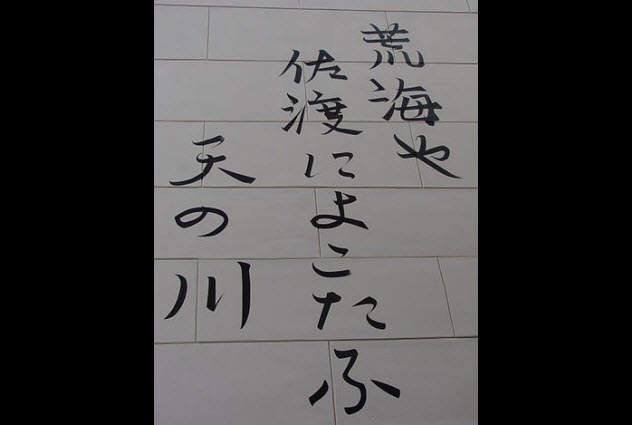
Haiku, the internationally known poetic form that consists of 17 syllables, had its roots in a linked verse game called haikai. Unlike haiku, haikai was considered more of a light amusement than a serious art form.
The opening piece of a haikai game was called a hokku (“beginning verse”). Haiku eventually developed from hokku. While some Edo poets like Matsuo Basho strove to turn haikai into a respectable artistic genre, many others continued to play it as a parlor game.
As haikai spread outside the circles of aristocratic elites and professional poets, the game began to be played by country peasants and the urban lower classes. Eventually, the game became so popular that it turned into a kind of gambling contest called mae-zuke.
Mae-zuke contests received hundreds and even thousands of entries in rural villages. One contest held in Kyoto in the late 17th century recorded over 10,000 entries.
To the horror of educated poets and noblemen, nearly everyone seemed to be composing poetry and entering their work in the gambling contests. Tsuboi Gohei, a poet and village leader, complained in his diary that haikai had “reached the point where everyone in the country was playing at it—women, children, even mountain bandits.”
Matsuo Basho did not think highly of the contests, either. He accused the participants of being “confused persons of the poetry world” and discouraged his disciples from acting as contest judges.
The authorities soon discouraged and cracked down on the contests as well. They fined and even banished participants because gambling was illegal.
5 Divorce Was Surprisingly Common
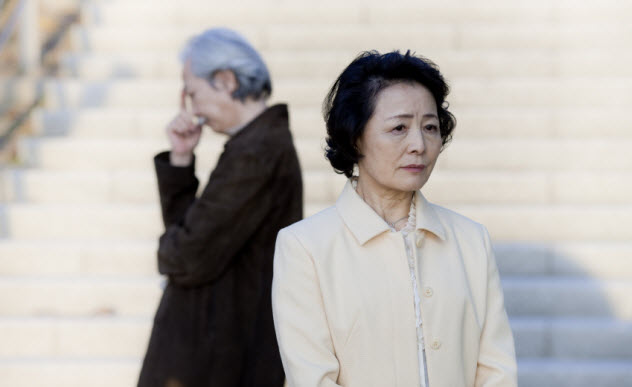
Compared to other societies of the same era, Edo Japan had exceptionally high divorce rates—up to 40 percent in some areas. In fact, the rate may have been higher because not every divorce was counted or reported to the authorities.
Divorce and multiple marriages were quite common, especially among the lower classes. Although the husband was the only partner who could end his marriage, the wife’s parents sometimes had the power to terminate it, too.
According to Confucian traditions, there were seven grounds on which a man could divorce his wife: disobedience, failure to give children, lewdness, jealousy, disease, disturbing the household or family, and an addiction to theft. In many instances, however, men divorced their wives on a “no fault” basis.
When a man did want to divorce his wife, all he had to do was give her a letter of divorce. These documents were short and popularly known as mikudari-han (“three lines and a half”). Technically, as long as the man returned his ex-wife’s property and dowry, the divorce process was smooth and simple.
Divorce remained high in Japan until the end of the 19th century. At that time, divorce rates began to decline due to modernization and Western-influenced reforms, two trends that are usually credited with increasing divorce rates.
4 There Was A Secret Christian Minority
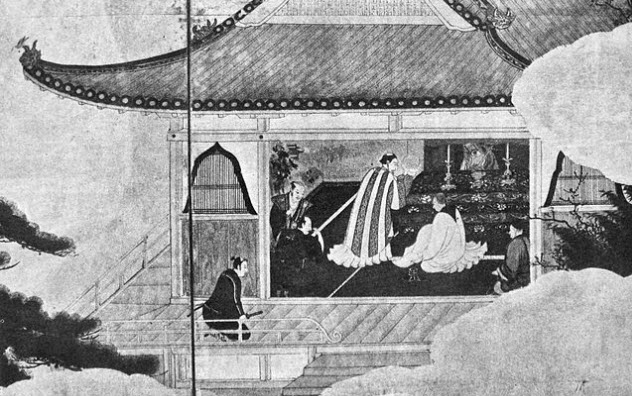
Comprising less than 1 percent of the population, Japan’s Christian minority is small compared to that of other East Asian countries like China and South Korea. Initially, when Christian missionaries arrived in the country in the mid-16th century, they were optimistic that religion would catch on.
By the end of the century, things were looking good. Both peasants and feudal lords were converting, and there were reportedly as many as 300,000 Christians at that time.
Just as Christianity was taking off, however, the authorities’ tolerance for this new religion began to wane. Japanese Christians were soon tortured and pressured to renounce Christianity, with some executed and even crucified.
This brutal mistreatment continued into the first decades of the shogunate. Finally, after the Christian peasant uprising of the Shimabara Rebellion, Christianity was banned outright.
Rather than give up their religion, tens of thousands of Christians decided to go underground and practice in secret. For the next 200 years, these Christians lived on remote islands and in other isolated places. They got baptized, celebrated Christmas, and chanted Latin prayers that nobody understood.
These Kakure Kirishitan (“Hidden Christians”) kept themselves a secret until the last few years of the Edo era when astonished Western missionaries rediscovered about 30,000 of them.
3 Prostitution Was Legal And Brutal
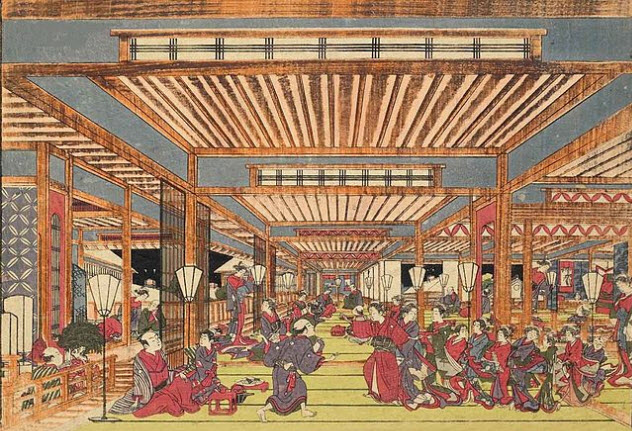
Although prostitution is technically illegal in Japan today, it was legal for hundreds of years before 1956. Beginning in the early years of the Edo era, the Japanese government confined brothels and prostitutes to designated “pleasure quarters” in the country’s big cities.
To ensure order and safety, the pleasure quarters were kept under a number of strict regulations. Each quarter was surrounded by a tall wall and could only be reached through an entrance that was placed before a moat.
Every client was expected to a follow a code of conduct, which dictated how he was supposed to behave and dress. Ordinary women were forbidden from visiting the pleasure quarters, and it was extremely difficult for prostitutes to leave.
From a contemporary viewpoint, the prostitution business in Edo Japan was more like sex slavery. Poor families regularly sold their young daughters to brothels to pay off debts or to provide an additional source of income.
The brothels forced the women or their families to sign harsh contracts which practically guaranteed that they could never leave. Many of these women were sold while they were still young children, although they weren’t expected to start working until they reached puberty.
For low-ranking prostitutes, working conditions were often quite brutal. Despite the availability of health clinics, venereal diseases were rampant and deadly. The average prostitute died young, often from suicide or complications related to abortion.
2 Plays About Love Suicides Caused Even More Suicides
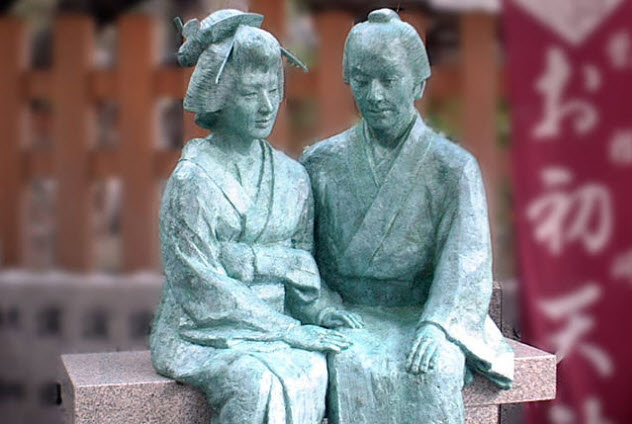
The most frequent customers of the regulated brothels in the big cities of Edo Japan were merchants and samurai. Although merchants were near the bottom of the era’s social hierarchy, they were also the wealthiest class and commanded a lot of influence with their money.
Occasionally, some of these men would fall madly in love with their favorite prostitutes and incur debt or shame by repeatedly visiting them. The era’s strict social hierarchy strongly discouraged high-ranking and middle-class men from marrying their lovers.
Most could not take the risk or afford the cost of paying for the woman’s freedom from her contract with her brothel. To ensure a man’s devotion, prostitutes would sometimes resort to self-mutilation to prove their love for their favorite client.
Perhaps influenced by the secret love oaths of homosexual men at that time, prostitutes began to pull out their nails and cut off their fingers for their lovers. Giving an amputated finger to a client was the highest form of devotion a prostitute could offer.
However, body mutilation was an extreme violation of Confucian-influenced taboos. As a result, it was far more common for higher-ranking prostitutes to buy fingers from peddlers or beggars who had taken their wares from corpses.
After a time, these gory oaths of love evolved into the shinju, the act of two lovers committing suicide together. Perhaps exacerbated by natural disasters and a financial crisis in the early 18th century, a number of distraught men committed shinju with their prostitute lovers, typically by slitting their throats with a razor.
Acts of shinju always caused a surge of public interest. Some of the more sensational cases were even adapted into stage plays. Monzaemon Chikamatsu, one of the biggest figures of Japanese literature, made a career of writing plays about love suicides that often caused copycat suicides.
Eventually, love suicides became such a problem that the authorities banned shinju plays and denied funerals to anybody who killed themselves in a love suicide. Anybody who survived a love suicide was banished or charged with the murder of their partner.
Although these measures didn’t put an immediate stop to love suicides, the practice became increasingly uncommon and never again reached the frequency that it had during Chikamatsu’s time.
1 The Legal System Was Ruthless
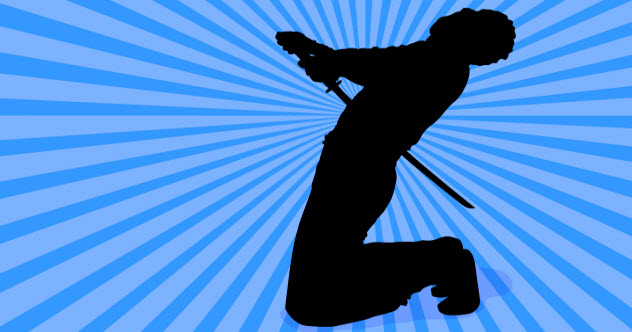
While cutting off a thief’s hands or beheading murderers may have seemed customary by the standards of their contemporaries, the Edo Japanese arguably went a bit overboard when administering justice and punishing criminals.
For example, not reporting theft was as illegal as actually stealing something. Thieves could be punished by banishment or mutilation. In later times, an offender could also be tattooed on his forehead.
Other criminals were sometimes stripped naked and forced to sit in public for as long as three days. Although execution was reserved only for the most serious of crimes, somebody sentenced to death could be crucified or gibbeted. Samurai could be ordered to commit seppuku (ritual suicide by disembowelment).
To keep the era’s social hierarchy tight and orderly, peasants were subjected to a number of harsh measures to prevent social mobility. A peasant could only legally move to a new village if he obtained a certificate of leave known as an okurijo.
The law dictated how peasants could dress and prohibited them from writing their last names on official documents. They were also expected to show the utmost respect to samurai. Any commoner who didn’t could be killed on the spot under the samurai’s right of kirisute-gomen.
Another unique procedure that was practiced in rural areas was irefuda. During times of unsolved serial arson and theft, villagers could vote for who they thought the offender was.
According to irefuda, whoever received the most votes was considered the criminal and thrown in jail. Anybody who defended the “winner” or failed to participate in the election could also be arrested.
A more anonymous form of justice could be done with a rakushogisho, a written accusation that was dropped before shrines. Ordinary peasants hated irefuda, but rakushogisho and other anonymous accusations were sometimes used to expose corruption among public officials.
Tristan Shaw runs a blog called Bizarre and Grotesque, where he writes about unsolved mysteries, paranormal phenomena, and other creepy and weird things.








